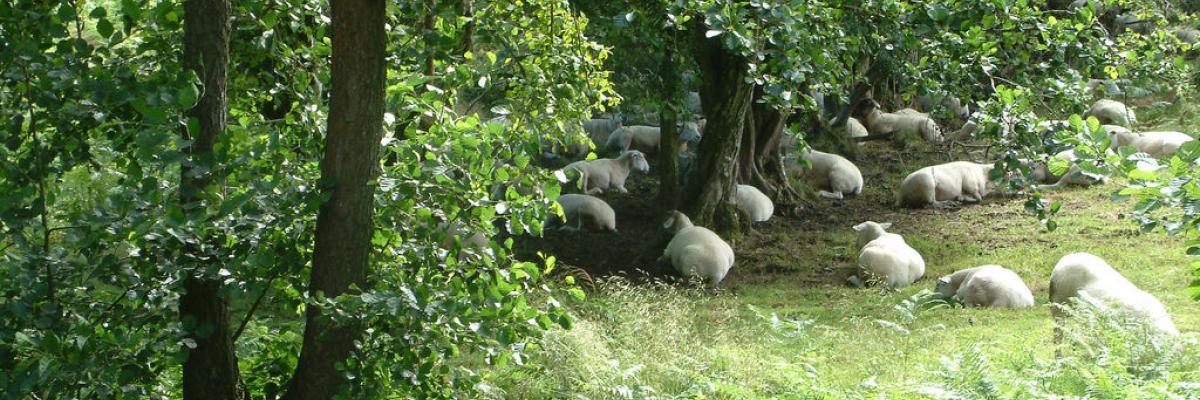

Trees enhance flock health and field drainage
planting trees to improve land management
Download the PDF
This case study of Welsh sheep and beef farmer Jonathan Francis describes the improved animal welfare and increased productivity that has resulted from trees being planted on his farm.
It explains the issues with lack of shelter, land drainage and soil erosion that have been overcome through strategically incorporating trees on the farm.
The concerns that led to the farm restructure are also linked to research carried out on farms in Pontbren that showed improved water infiltration rates through tree planting and subsequent benefits for sheep flocks.
You can read how Jonathan has used tree belts to store rainwater, reduce surface runoff and provide livestock shelter, and to contain livestock and prevent soil erosion alongside a stream. A description of shelterbelt planting on hill ground provides useful insights in to properties of tree species used. Potential improved biosecurity measures Jonathan can expect from integrating trees into the farmland are outlined.
- Surface water runoff can cause soil erosion and waterlogged fields, making areas unproductive during periods of heavy rainfall.
- Strategic planting is key to maximising the benefits from trees on your farm.
- Improving shelter in fields can give you more options for early turnout sites.
- Integrating trees on to hill ground can help improve the use of the ground as grazing land.
- Tailored planting schemes can help reduce surface water runoff and loss of nutrients, soil erosion, compaction and the pollution of nearby watercourses.
- Using fences and tree belts in fields can improve pasture and make them more manageable.
- Linear shelter belts, treed boundaries and small woodlands will help create shelter, improve field drainage and provide optimum conditions for lambing and good mothering.
- Trees can be used to create field boundaries and improve biosecurity through reducing the potential for disease transmission from neighbouring animals..
- Reducing wind exposure with the use of trees can reduce the risk of neonatal loss of lambs and lower the incidence of mastitis.
